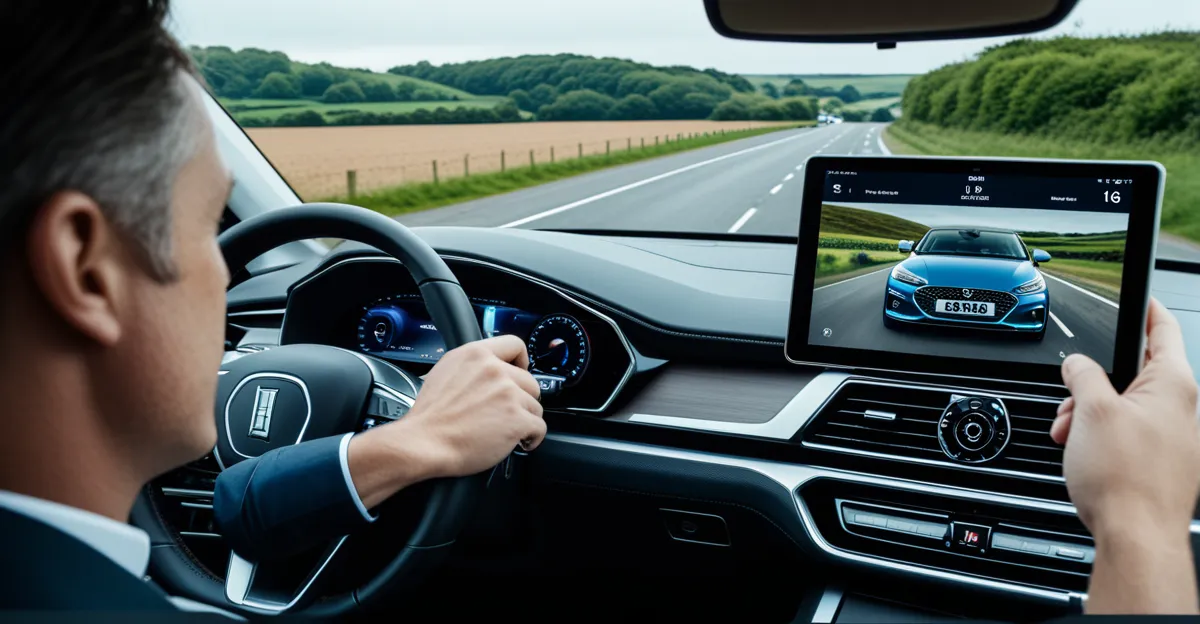The Fundamentals of 5G Technology in the Automotive Industry
Understanding 5G basics is crucial to grasp how this technology transforms automotive technology. Compared to 4G/LTE, 5G introduces significant improvements in data speed, capacity, and latency. These enhancements enable vehicles to communicate faster and more reliably within cellular networks. Unlike previous generations, 5G achieves potential data speeds up to 10 Gbps with latency as low as 1 millisecond.
This ultra-low latency is pivotal for connected vehicles that rely on real-time data exchange for safety and navigation. For instance, autonomous cars use 5G to instantly process sensor input and communicate with nearby vehicles and traffic infrastructure. Additionally, 5G’s enhanced bandwidth supports more devices simultaneously, which aligns with the increasing number of smart vehicle sensors and systems.
This might interest you : How Will the Adoption of Electric Vehicles Transform the UK’s Auto Industry?
Within the context of UK connectivity, 5G deployment supports expanding automotive applications by providing stable, high-speed connections essential for urban and rural settings. Cellular networks using 5G allow automotive systems to integrate seamlessly into broader smart city frameworks, improving overall traffic management and road safety. In summary, the fundamentals of 5G include its high data speeds, low latency, and improved network capacity tailored to the demands of modern automotive technology.
Key Automotive Applications Powered by 5G
5G automotive applications revolutionize connected vehicles by enabling seamless vehicle-to-everything (V2X) communication. This technology allows vehicles to exchange data not only with each other but also with traffic lights, road infrastructure, and even pedestrians in real time. The ultra-low latency and high data speeds that 5G offers are critical for safely supporting these interactions. For example, collision warnings and hazard alerts can be transmitted instantly, enhancing road safety and responsiveness.
In parallel : How Will Advances in UK Automotive Technology Shape Our Future?
In the context of autonomous driving, 5G supports the complex data demands of self-driving and semi-autonomous vehicles. These cars rely heavily on rapid data processing and communication with their surroundings, which 5G’s high bandwidth and low latency provide. Within the UK, 5G is driving progress in autonomous vehicle trials, helping to address challenges like traffic congestion and accident prevention.
Additionally, 5G automotive applications improve user experiences by enabling features such as real-time navigation updates and cloud-based AI assistance. This integration moves connected vehicles closer to fully autonomous functionality, highlighting 5G’s vital role in modern automotive technology advancement.
Advantages of 5G for UK Vehicle Connectivity: Safety, Efficiency, User Experience
The 5G benefits for automotive safety in the UK are substantial. High data speeds and ultra-low latency provided by cellular networks enable near-instantaneous communication between vehicles and infrastructure. This responsiveness helps prevent accidents by delivering timely collision warnings and hazard alerts, crucial for enhancing automotive safety. Real-time data exchange supports adaptive traffic control, reducing congestion and improving emergency response times.
From an efficiency standpoint, 5G facilitates better fleet management and route optimization. Transport providers leverage these network capabilities to lower fuel consumption and emissions, contributing to environmental goals. Enhanced data flow allows vehicles to adjust speed and routing dynamically based on real-time traffic and environmental conditions, boosting operational efficiency across UK roads.
User experience improves through UK connected car features like immersive infotainment, cloud-based services, and seamless software updates. 5G’s bandwidth supports high-quality streaming and sophisticated AI assistants, making journeys both safer and more enjoyable. Altogether, these 5G benefits underscore how this technology transforms connected vehicles, positioning the UK as a leader in automotive innovation.
Challenges and Barriers to 5G Adoption in the UK Automotive Sector
Despite the promising benefits of 5G in automotive technology, several 5G challenges hinder quick adoption across the UK. A significant barrier lies in network infrastructure requirements. The rollout of 5G demands dense cellular networks with numerous small cells to ensure consistent coverage, particularly in rural and suburban areas where connections can be weak or patchy. This infrastructure expansion necessitates substantial investment from both public and private sectors.
Another major concern is interoperability. Vehicles equipped with 5G-based systems must seamlessly communicate with existing road infrastructure and other vehicles, which often use different communication protocols. Ensuring compatibility across varying technologies and manufacturers is complex and requires standardized solutions.
Security issues also pose critical challenges. The increased connectivity afforded by 5G opens new vectors for cyberattacks, impacting automotive safety and data privacy. Automotive systems must incorporate robust encryption and threat detection to safeguard communications. Addressing these challenges is essential for advancing reliable and secure 5G-enabled automotive solutions within the UK’s evolving cellular networks landscape.
The Fundamentals of 5G Technology in the Automotive Industry
The core advancements of 5G basics over 4G/LTE lie in dramatically increased data speeds and significantly reduced latency. While 4G networks deliver speeds up to 1 Gbps, cellular networks powered by 5G can achieve potential speeds up to 10 Gbps. This substantial improvement is critical for automotive technology, where real-time communication is essential. The ultra-low latency of 5G, as low as 1 millisecond, enables connected vehicles to share information instantly, supporting split-second decision-making.
In the context of UK connectivity, these capabilities allow vehicles to integrate seamlessly with dense cellular network environments. High bandwidth ensures that numerous vehicle sensors and systems operate concurrently without network congestion. Furthermore, 5G’s architecture supports network slicing, which can dedicate specific resources to automotive applications, guaranteeing reliable, high-performance connections.
Such technological features position 5G as foundational for the future of connected and autonomous vehicles in the UK. The precision and speed of cellular networks fundamentally transform how vehicles interact with one another and roadside infrastructure, enhancing safety, navigation, and system responsiveness within the UK’s evolving automotive ecosystem.
The Fundamentals of 5G Technology in the Automotive Industry
The leap from 4G/LTE to 5G basics centers on three core advances: vastly increased data speeds, ultra-low latency, and enhanced network capacity within cellular networks. While 4G typically maxes out around 1 Gbps, 5G networks deliver potential peak speeds reaching 10 Gbps. This speed surge is essential for automotive technology, where instant data transmission supports complex, time-critical interactions.
Latency reductions further distinguish 5G, shrinking delay times to approximately 1 millisecond. This negligible latency allows connected vehicles to process sensor data and communicate immediately, a critical factor for driving safety and navigation. By enabling real-time exchanges, 5G ensures that vehicles react swiftly to changing conditions, preventing accidents and enhancing system reliability.
Regarding UK connectivity, 5G’s advanced architecture supports dense traffic of devices by leveraging network slicing and massive MIMO technology. This means multiple automotive systems can simultaneously operate without network congestion. The enhanced bandwidth and stability of 5G cellular networks also provide a backbone for evolving automotive applications, from autonomous driving to smart infrastructure integration, positioning the UK as a leader in future-ready vehicle connectivity.








